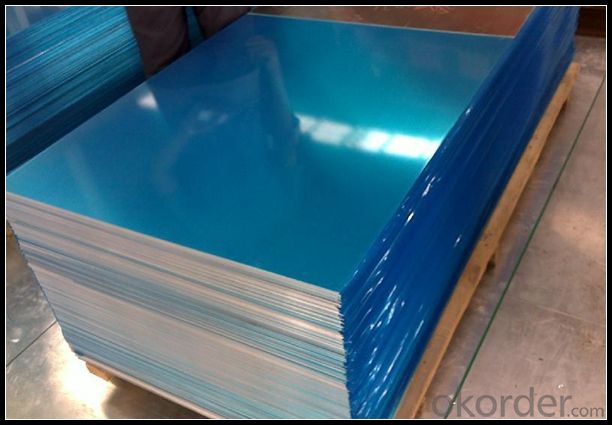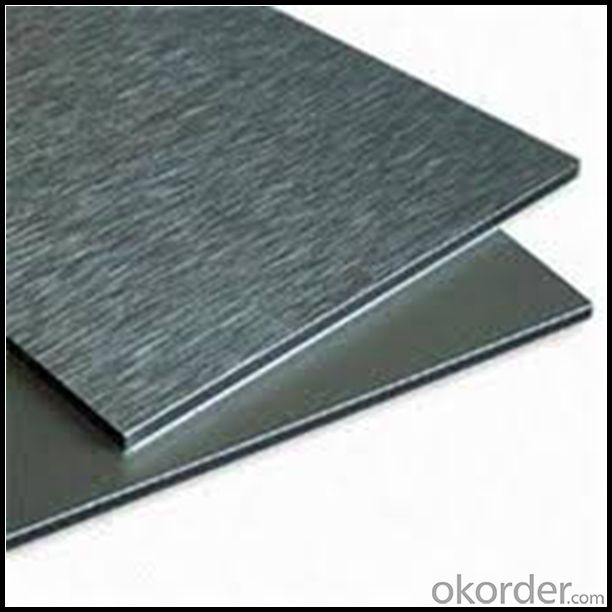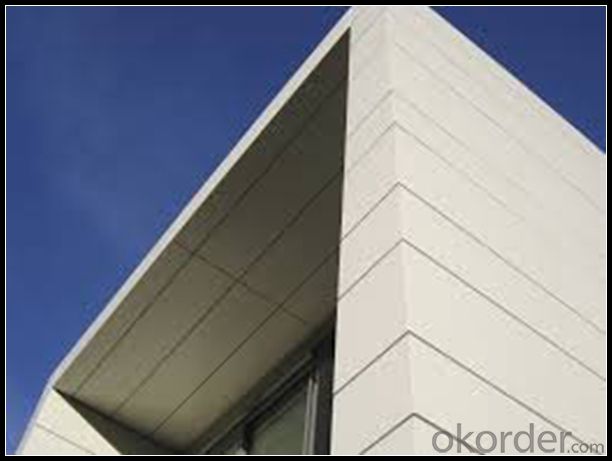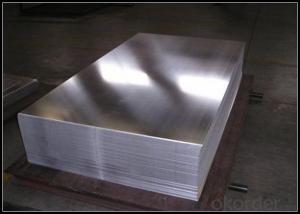Auminium Sheet with German Standard DIN 1747
- Loading Port:
- Shanghai
- Payment Terms:
- TT OR LC
- Min Order Qty:
- 5 m.t.
- Supply Capability:
- 1000 m.t./month
OKorder Service Pledge
OKorder Financial Service
You Might Also Like
Item specifice
1. Structure of Auminium Sheet with German Standard DIN 1747 Description
Auminium Sheet with German Standard DIN 1747 is semi-finished aluminium material. This coil can be rolled down to aluminium coil,sheet,circle ect. The alloy AA1050 is widly used in building, industry ect. Its weight is much lower than steel. So many customers choosed aluminium material instead of steel.
2. Specification of Auminium Sheet with German Standard DIN 1747
Auminium Sheet with German Standard DIN 1747 | |
Main Specification | |
Alloy | AA1xxx (AA1050, AA1060, AA1070, AA1100 etc.) |
AA3xxx (AA3003, AA3004, AA3005, AA3105 etc.) | |
AA5xxx, AA6XXX (AA5052,AA5083, AA5754, AA6061, AA6062 etc.) | |
AA8xxx(AA8011, AA8006 etc.) | |
Temper | H14,H16, H18, H22, H24, H26, H32,O/F, T4, T6, T651 |
Thickmess | 0.01mm-100mm |
Width | 30mm-1700mm |
Standard | GB/T 3880-2006/ASTM |
Special specification is available on customer's requirement | |
3. Application of Auminium Sheet with German Standard DIN 1747
(1).Interior: wall cladding, ceilings, bathrooms, kitchens and balconies, shutters, doors...
(2).Exterior: wall cladding, facades, roofing, canopies, tunnels,column covers , renovations...
(3).Advertisement: display platforms, signboards, fascia, shop fronts...
4. Feature of Auminium Sheet with German Standard DIN 1747
Surfact Quality :
Be free from Oil Stain, Dent, Inclusion, Scratches, Stain, Oxide Dicoloration, Breaks, Corrosion, Roll Marks, Dirt Streaks and other defect which will interfere with use,
Mechenical Property:
Chemical Composite and Mechanical Property
5. Certificate of Auminium Sheet with German Standard DIN 1747
SGS and ROHS(if client request, paid by client), MTC(plant provided), Certificate of Origin(FORM A, FORM E, CO), Bureau Veritas and SGS (if client request, paid by client), CIQS certificate
6. Image of Auminium Sheet with German Standard DIN 1747



7. Package and shipping of Auminium Sheet with German Standard DIN 1747
First, plastic cloth with drying agent inside; Second, Pearl Wool ; Third, wooden cases with dry agent , fumigation wooden pallets, aluminum surface could cover blue PVC film
8. FAQ
1) What is the delivery time?
Depends on actual order, around 20 to 35 days
2) What is the QC system:
We have QC staff of 20 persons and advanced equipment, each production is with MTC traced from Aluminum ingot lot.
3) What market do you mainly sell to?
Australia, America, Asia, Middle East, Western Europe, Africa etc
- Q:What is the density of 101 aluminum sheets?
- The density of 101 aluminum sheets depends on the thickness and dimensions of each sheet. In general, the density of aluminum is about 2.7 grams per cubic centimeter (g/cm³). To calculate the density of 101 aluminum sheets, you would need to know the mass and volume of each sheet. By dividing the total mass of the sheets by their total volume, you can determine the density.
- Q:Which kind of material does aluminum sheet(aluminum oxide) belong to?
- it's metal and belongs to hardware
- Q:What are the weight-saving benefits of using aluminum sheets in different applications?
- There are several weight-saving benefits of using aluminum sheets in different applications. Firstly, aluminum is a lightweight metal, with a density much lower than other commonly used materials such as steel. This means that by replacing steel sheets with aluminum sheets, significant weight reduction can be achieved in various applications. The reduced weight of aluminum sheets is particularly advantageous in transportation industries. For example, in the automotive sector, using aluminum sheets for body panels, chassis components, and other structural parts can significantly lighten the vehicle's overall weight. This weight reduction leads to improved fuel efficiency, as less energy is required to move the lighter vehicle. Additionally, lighter vehicles generally have better acceleration, handling, and braking performance. In the aerospace industry, the weight-saving benefits of aluminum sheets are even more crucial. Every extra kilogram of weight on an aircraft can increase fuel consumption, and thus operating costs. By utilizing lightweight aluminum sheets in the construction of aircraft structures, such as wings, fuselages, and engine components, the overall weight of the aircraft can be reduced, resulting in improved fuel efficiency and extended flight range. Another industry where the weight-saving benefits of aluminum sheets are highly valued is the construction sector. Aluminum sheets are often used in the construction of buildings and infrastructure due to their lightweight nature. This lightweight characteristic not only makes installation easier but also reduces the overall load on the building's foundation. Moreover, using aluminum sheets in construction can also lead to cost savings, as lighter materials require less support structure and can be transported more efficiently. Furthermore, the weight-saving benefits of aluminum sheets extend to various other applications such as packaging, electronics, and consumer goods. In packaging, aluminum sheets are commonly used for lightweight and flexible packaging materials, reducing shipping costs and environmental impact. In electronics, aluminum sheets are used in devices like laptops and smartphones, where weight reduction is desirable for portability. Lastly, in consumer goods, aluminum sheets are utilized for producing lightweight and durable products, such as furniture, cookware, and sports equipment. In conclusion, the weight-saving benefits of using aluminum sheets in different applications are significant. The lightweight nature of aluminum allows for reduced weight in transportation industries, improved fuel efficiency, better performance, and extended flight range in aerospace applications, cost savings and easier installation in construction, as well as various advantages in packaging, electronics, and consumer goods. Overall, aluminum sheets offer a versatile and efficient solution for achieving weight reduction and enhancing performance in diverse industries.
- Q:What are the different fabrication methods used for aluminum sheets?
- Some of the different fabrication methods used for aluminum sheets include rolling, extrusion, casting, and stamping.
- Q:So I want to solder aluminum cans together for this project I have. What tools will I need?
- The only way you can solder any kind of alum. is to gold plate both pieces of whatever you are trying to solder together
- Q:Can aluminum sheets be used for packaging purposes?
- Yes, aluminum sheets can be used for packaging purposes. Aluminum is a versatile and popular material for packaging due to its excellent barrier properties, durability, and light weight. It is commonly used in various forms such as aluminum foil, cans, and containers for packaging a wide range of products including food, beverages, pharmaceuticals, and cosmetics. Aluminum sheets offer several advantages for packaging purposes, including resistance to moisture, oxygen, light, and bacteria, which helps to protect the contents and maintain their freshness. Additionally, aluminum sheets can be easily shaped, molded, or folded to create different packaging designs, making it a preferred choice for many packaging applications.
- Q:What is the typical fatigue life of aluminum sheets?
- The fatigue life of aluminum sheets can vary depending on several factors such as the alloy used, sheet thickness, manufacturing process, and the specific application they are used for. Generally, aluminum sheets have a higher fatigue strength compared to other materials, allowing them to endure numerous cyclic loading cycles before failure. However, it is important to consider that fatigue life can be influenced by different factors including stress levels, loading conditions, and environmental elements like temperature and humidity. When aluminum sheets are exposed to high stress levels, cyclic loading, or harsh environmental conditions, their fatigue life may decrease. In certain applications where aluminum sheets are subjected to low stress levels or are not exposed to cyclic loading, they can have an unlimited fatigue life. Conversely, in high-stress applications or when subjected to cyclic loading, aluminum sheets typically have a limited fatigue life that can range from thousands to millions of cycles. To accurately determine the fatigue life of aluminum sheets for a specific application, it is recommended to refer to relevant industry standards, test data, or consult with material engineers or manufacturers who can provide more precise information based on the specific parameters and usage conditions.
- Q:Aluminum siding is essentially maintenence-free, extremelydurable, and is a great insulator, even better than brick. Brickleaks air through the mortar between the bricks, especially in olderhouses that need tuckpointing. My question is, do you feel sidingstill has a declasse connotation, or is it getting more acceptableas the years go on?
- Brick is certainly the most durable if taken care of properly. My second choice is aluminum siding, which is far more durable than vinyl siding any day. Vinyl is simply more affordable, which is why most home have it these days - whoever decided that aluminum siding declasses a home, is full of malarky.
- Q:What are the different methods of surface coloring aluminum sheets?
- There are several different methods to surface color aluminum sheets, each with its own advantages and limitations. Some of the most common methods include anodizing, powder coating, and painting. 1. Anodizing: Anodizing is a popular method for coloring aluminum sheets. It involves creating a controlled oxide layer on the surface of the aluminum through an electrochemical process. This oxide layer can be dyed in various colors, providing a durable and long-lasting finish. Anodized aluminum is resistant to corrosion, UV rays, and scratching, making it ideal for outdoor applications. 2. Powder coating: Powder coating is another widely used method for coloring aluminum sheets. It involves applying a dry powder coating to the surface of the sheet, which is then cured in an oven. The powder melts and forms a protective layer that adheres to the aluminum. Powder coating offers a wide range of colors and finishes, and it provides excellent durability, resistance to fading, and protection against scratches. 3. Painting: Painting is a traditional method of coloring aluminum sheets. It involves applying a liquid paint to the surface, which then dries and forms a protective layer. Painting offers a vast array of color options and can be used to achieve different finishes, such as matte, gloss, or metallic. However, painted aluminum sheets may require additional protective coatings to enhance durability and resistance to fading. 4. Cladding: Cladding is a technique that involves applying a thin layer of colored material, such as stainless steel, copper, or composite panels, to the surface of the aluminum sheet. This method allows for a wide range of colors and finishes, and it provides additional protection to the aluminum. Cladding can be used to achieve a unique aesthetic or to enhance the durability of the aluminum sheet. 5. Dye sublimation: Dye sublimation is a specialized method of coloring aluminum sheets that involves transferring designs or images onto the surface using heat and pressure. This process allows for high-resolution prints and vibrant colors, making it popular for decorative and signage applications. Each method of surface coloring aluminum sheets has its own advantages and considerations, such as durability, aesthetics, cost, and application requirements. It is important to carefully evaluate these factors to determine the most suitable method for a specific project.
- Q:Are aluminum sheets suitable for automotive body framing?
- Yes, aluminum sheets are suitable for automotive body framing. Aluminum is lightweight, corrosion-resistant, and offers excellent strength-to-weight ratio, making it an ideal choice for reducing vehicle weight and improving fuel efficiency. It is commonly used in modern automotive manufacturing for body panels and frames, providing structural integrity while maintaining durability.
1. Manufacturer Overview |
|
|---|---|
| Location | |
| Year Established | |
| Annual Output Value | |
| Main Markets | |
| Company Certifications | |
2. Manufacturer Certificates |
|
|---|---|
| a) Certification Name | |
| Range | |
| Reference | |
| Validity Period | |
3. Manufacturer Capability |
|
|---|---|
| a)Trade Capacity | |
| Nearest Port | |
| Export Percentage | |
| No.of Employees in Trade Department | |
| Language Spoken: | |
| b)Factory Information | |
| Factory Size: | |
| No. of Production Lines | |
| Contract Manufacturing | |
| Product Price Range | |
Send your message to us
Auminium Sheet with German Standard DIN 1747
- Loading Port:
- Shanghai
- Payment Terms:
- TT OR LC
- Min Order Qty:
- 5 m.t.
- Supply Capability:
- 1000 m.t./month
OKorder Service Pledge
OKorder Financial Service
Similar products
New products
Hot products
Related keywords





























